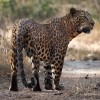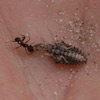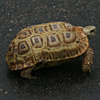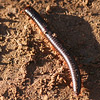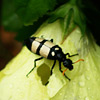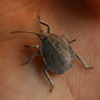Stripes on tail, unlike Red-tailed hawk.
Fieldguide
Look exactly like an African leopard. Widely distributed on the Indian subcontinent and classified as Near Threatened.
Thanks to Frank Smith at the Grupo Ecológico de la Costa Verde in San Pancho, we saw newborn turtles and found five nests late at night, including one mother laying the eggs. The mother goes into a trance when she is laying eggs. The incubation period is 45 days, and the baby turtles that survive to adulthood (1 in 500) will come back to the same beach to lay their own eggs. Click here to see the film.
We went off on a mission to find some new animals for our field guide – it was surprisingly easy. Thank you insects!
We first saw them near mangroves at Pomene. They’re really funny and look like they’re walking backwards. They live in perfect cone holes, ants fall in and can’t get out and get eaten by the ant lion.
We drove by a tiny Spek’s Hingeback tortoise in Savuti. Bea and Mila played with it a while and wished it could be their pet.
The black rhino has a hooked lip. It’s the second largest land mammal. People hunt rhinos for their horns, which are entirely made of hair. They are very valuable in Asia where they’re used as medicine.
Millipedes. Curl up when you touch them. They squirt poo on you at the beginning when you handle them. Some say the poo is poisonous.
Quite beautifully camouflaged on a rainy leaf.

